Friday☕️

Trending:
- On September 25, 2025, Spanish Prime Minister Pedro Sánchez, speaking from New York during the UN General Assembly, announced the deployment of the Spanish Navy's Maritime Action Vessel (BAM) Furor to support and protect the Global Sumud Flotilla, a civilian-led humanitarian mission aiming to deliver aid to Gaza amid the ongoing blockade. This decision aligns with requests from Spain's coalition partners for a defensive military escort, following reports of drone attacks on the flotilla near Greece in the Mediterranean Sea. Italy has similarly dispatched a naval vessel for the same purpose, marking a coordinated European effort to ensure the flotilla's safety without direct confrontation.
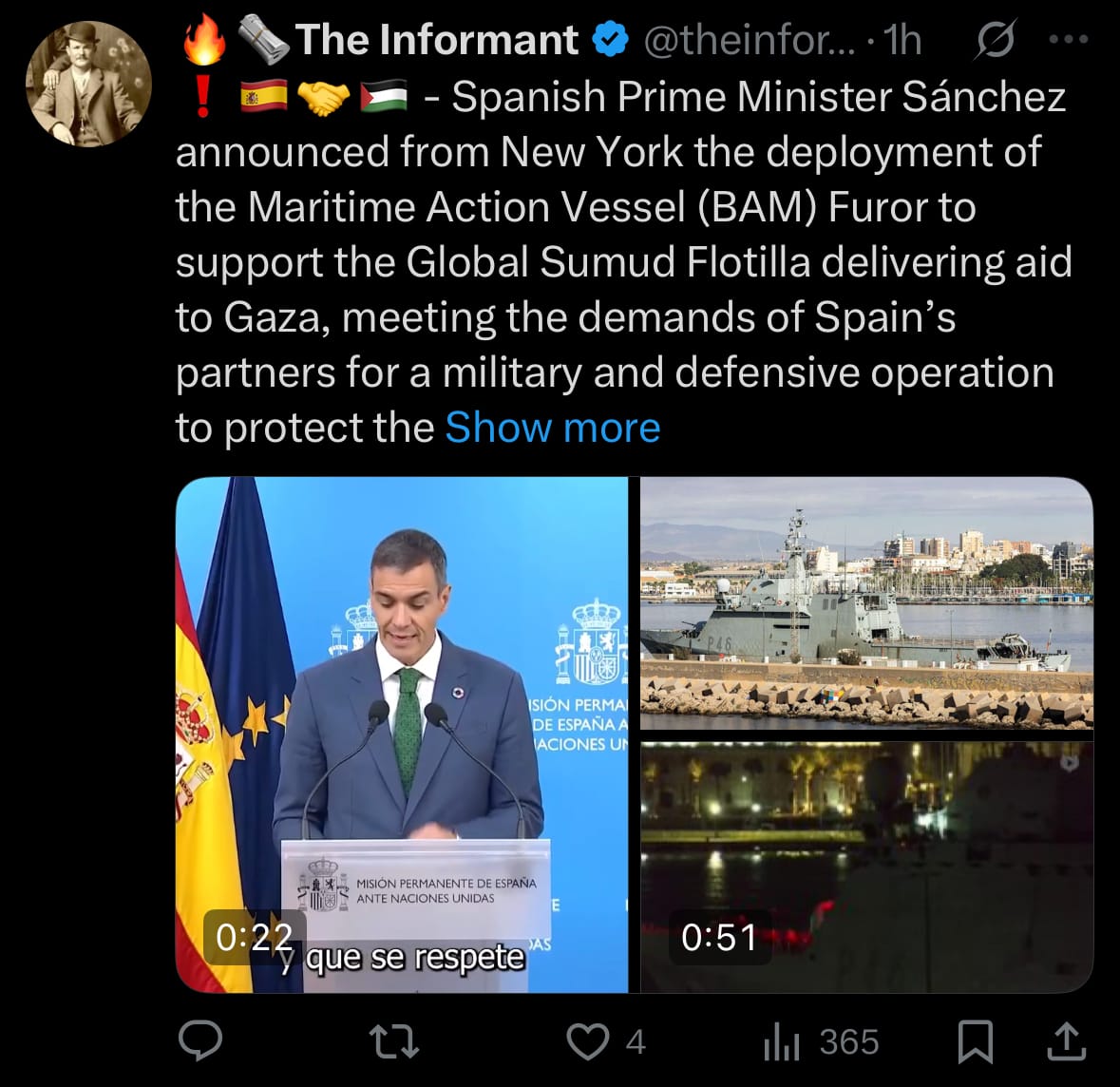
- Israel has reiterated its intent to block the flotilla from reaching Gaza's shores but stated it has no objections to the presence of the Spanish and Italian vessels as long as they remain at a standoff range and serve no other function, as clarified by Eden Bar-Tal, Director General of Israel's Foreign Ministry, during a press conference in Jerusalem. Videos circulating from the flotilla, including footage shared on social media platforms depict unidentified drones approaching the vessels during daylight, hovering or circling around them, and then dropping flashbang-like explosive devices that cause loud detonations and splashes near the ships. These incidents, described as harassment tactics, highlight vulnerabilities in open-sea humanitarian operations and underscore escalating tensions in the region, though no group has claimed responsibility, and the attacks could serve purposes beyond immediate disruption, such as deterrence or intelligence gathering.
Economics & Markets:
- Yesterday’s U.S. stock market:
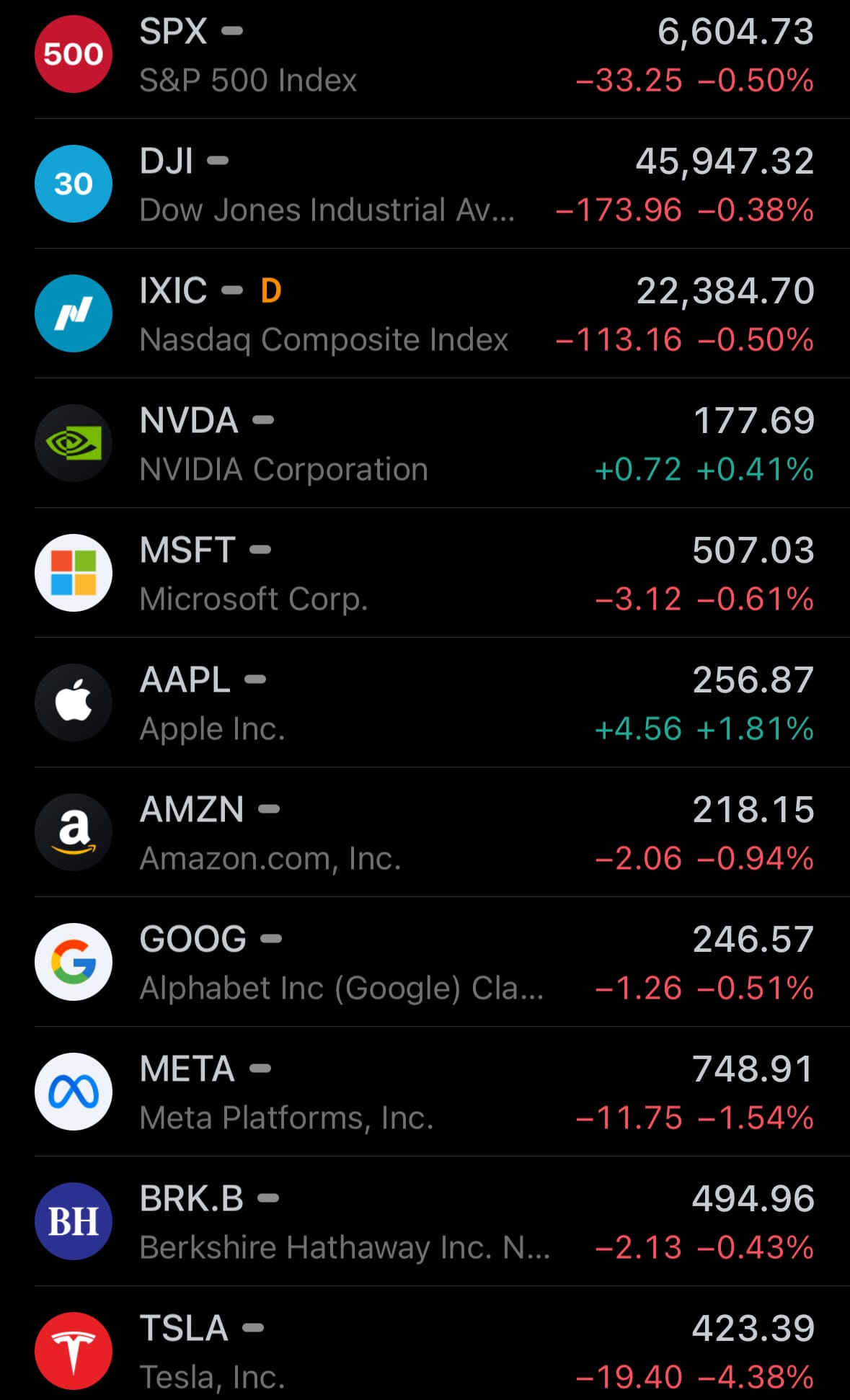
- Yesterday’s commodity market:
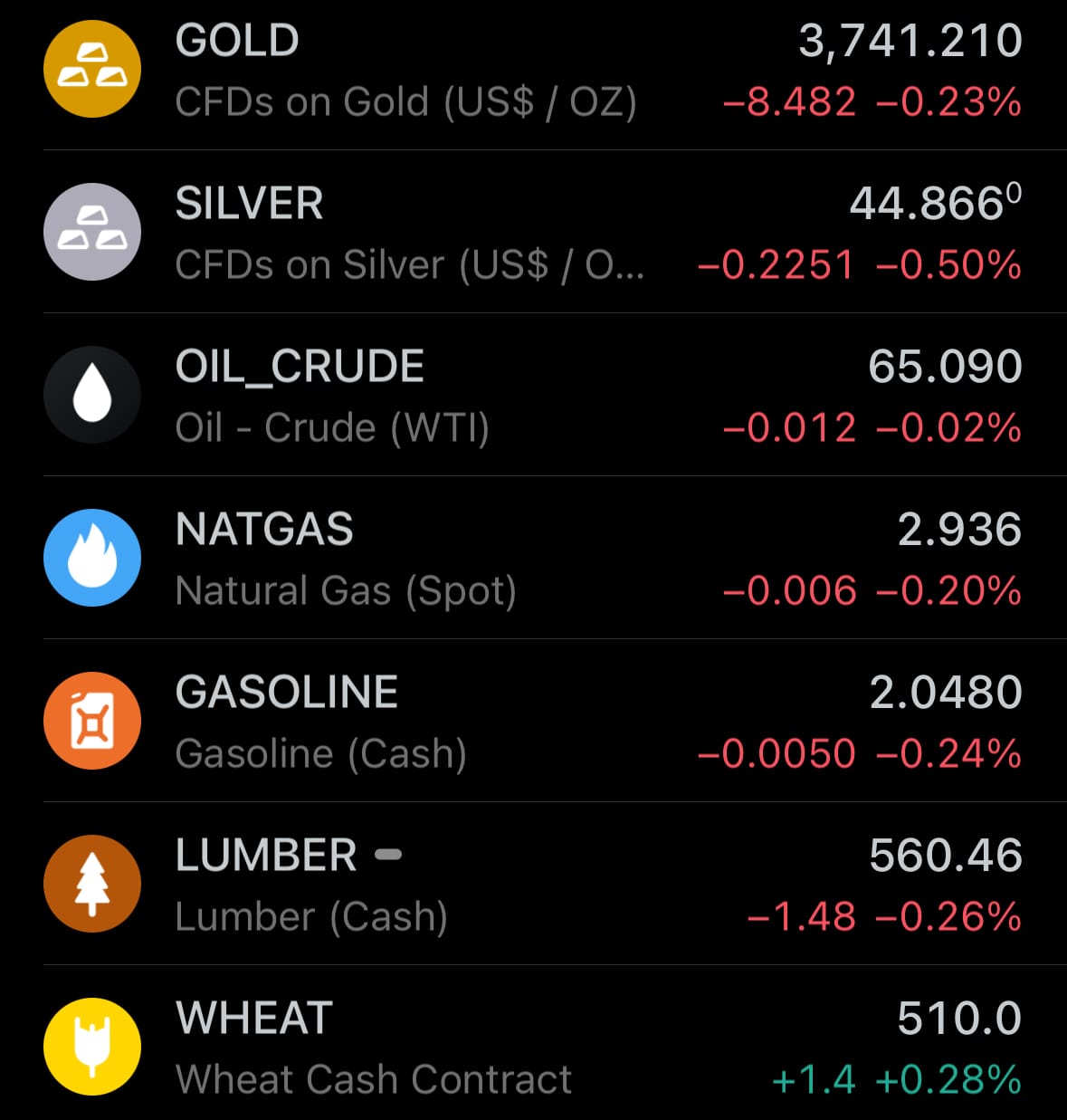
- Yesterday’s crypto market:
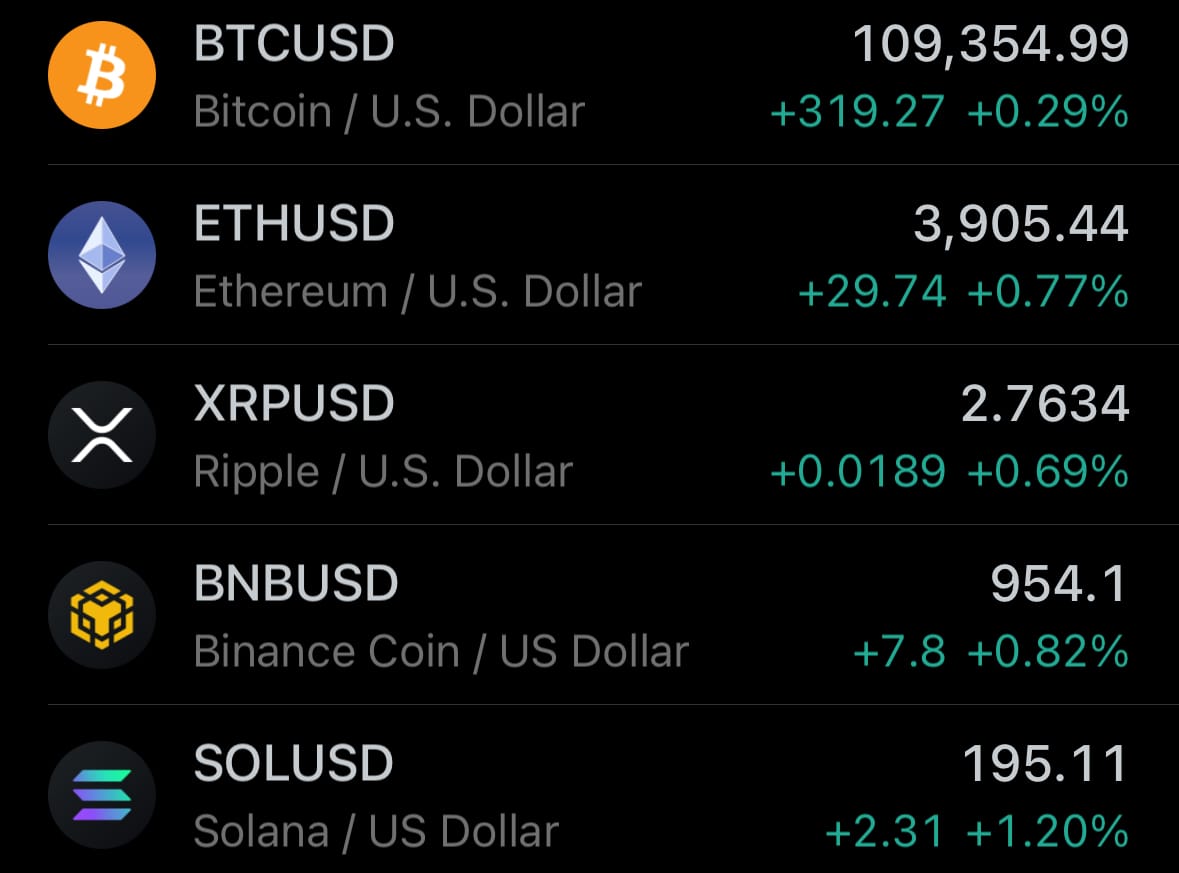
Health:
- On September 23, 2025, the U.S. Department of Agriculture's Food Safety and Inspection Service issued a nationwide public health alert for Trader Joe's Turkey Gobbler Wrap due to potential contamination with Listeria monocytogenes, a bacterium that can cause serious infections. The affected product is packaged in 10-ounce clear plastic clamshells labeled "TRADER JOE'S TURKEY GOBBLER WRAP" with a best-by date of September 16, 2025, and was produced on September 10, 2025, then distributed to Trader Joe's stores across the country.
- The alert was prompted by routine testing that detected Listeria on food-contact surfaces associated with the wrap's production, though no illnesses have been reported to date, and it is not classified as a full recall since the items are no longer available for purchase. Consumers who may have purchased the wrap are advised to discard it or return it to any Trader Joe's location for a refund, as Listeria poses particular risks to pregnant individuals, newborns, the elderly, and those with weakened immune systems, potentially leading to symptoms like fever, muscle aches, and gastrointestinal issues.
Cyber:
- On September 24, 2025, Cisco disclosed a zero-day vulnerability in its IOS and IOS XE software, tracked as CVE-2025-20352, which resides in the Simple Network Management Protocol subsystem and is actively being exploited by attackers to potentially execute arbitrary code or cause denial-of-service conditions on affected devices. The flaw allows unauthenticated remote attackers to send specially crafted SNMP packets to vulnerable systems, impacting routers and switches running unpatched versions of the software. Cisco has released patches to address this high-severity issue, along with other related vulnerabilities in products like Adaptive Security Appliance and Firepower Threat Defense software, urging immediate updates to prevent further compromises.
- This incident highlights persistent risks in network infrastructure, where exploited zero-days can lead to unauthorized access, data breaches, or operational disruptions in critical systems used by organizations worldwide. Security experts recommend applying the available fixes promptly, conducting vulnerability scans, and monitoring for suspicious SNMP traffic, while emphasizing the need for layered defenses in enterprise environments. The event serves as a reminder of the evolving threat landscape without indicating failures across all Cisco deployments or the industry at large.
Science & Technology:
- On September 25, 2025, OpenAI introduced ChatGPT Pulse in preview mode, a feature that provides proactive personalized daily updates drawn from users' past chats, feedback, and linked applications like calendars. It transforms ChatGPT from a response-only system to one that conducts background analysis overnight to create tailored morning summaries, briefs, or recommendations based on individual contexts and interests. The rollout begins with ChatGPT Pro users on mobile platforms, with intentions for wider access after the preview phase, focusing on improving user interaction through subtle AI support.

- This addition signals OpenAI's efforts to create more self-sufficient and embedded AI tools, which could fulfill demands for continuous, relevant assistance without repeated user input, while prompting discussions on privacy implications and the line between useful and overly involved daily AI involvement. Initial feedback from users and experts notes benefits like efficient content curation, such as customized news overviews or task alerts, alongside worries about over-dependence on AI for routine information. It fits into industry-wide shifts toward anticipatory AI systems, offered solely to premium members to bolster subscription value.
Statistic:
- Largest assets on Earth by market capitalization:
- Gold: $25.330T
- 🇺🇸 NVIDIA: $4.326T
- 🇺🇸 Apple: $3.812T
- 🇺🇸 Microsoft: $3.768T
- 🇺🇸 Alphabet (Google): $2.977T
- Silver: $2.541T
- 🇺🇸 Amazon: $2.326T
- Bitcoin: $2.175T
- 🇺🇸 Meta Platforms: $1.881T
- 🇺🇸 Broadcom: $1.587T
- 🇸🇦 Saudi Aramco: $1.570T
- 🇹🇼 TSMC: $1.434T
- 🇺🇸 Tesla: $1.407T
- 🇺🇸 Berkshire Hathaway: $1.067T
- 🇺🇸 JPMorgan Chase: $861.91B
- 🇺🇸 Oracle: $827.87B
- 🇺🇸 Walmart: $821.60B
- 🇨🇳 Tencent: $762.26B
- 🇺🇸 Visa: $650.07B
- 🇺🇸 Eli Lilly: $640.59B
- SPDR S&P 500 ETF Trust (SPY): $603.94B
- 🇺🇸 Netflix: $513.41B
- 🇺🇸 Mastercard: $512.84B
- 🇺🇸 Exxon Mobil: $492.78B
- Ethereum: $470.05B
History:
- The history of rocket technology begins more than seven centuries ago, with the first gunpowder-propelled “fire arrows” used in 13th-century China. These simple weapons spread through Asia and the Middle East, eventually influencing the iron-cased rockets of India in the late 18th century, which impressed European observers and inspired the Congreve rockets of the early 1800s. By the 20th century, rocketry shifted from battlefield tools to a science of propulsion and flight. In 1903, Konstantin Tsiolkovsky outlined the mathematical principles of space travel, and in 1926, Robert Goddard built and launched the first liquid-fueled rocket, proving the practicality of controlled rocket propulsion. This knowledge culminated in the German V-2 during World War II—the first large liquid-fueled rocket with sophisticated guidance systems—which became the foundation for both U.S. and Soviet missile and space programs. The Cold War then drove rapid advancements: in 1957, the Soviet R-7 rocket launched Sputnik, beginning the Space Age, and by 1969, Apollo 11 carried humans to the Moon using the Saturn V, the most powerful rocket ever built at the time.
- Alongside space exploration, missile technology advanced with intercontinental ballistic missiles (ICBMs) and multiple warhead systems, prompting the first treaties to limit anti-ballistic missile defenses in the early 1970s. Still, defense research continued, from Reagan’s Strategic Defense Initiative in the 1980s to operational systems like Patriot missiles in the 1990s, Aegis and THAAD in the 2000s, and Israel’s Iron Dome in the 2010s. These technologies marked the shift toward missile interception and layered defense. In parallel, reusability emerged as a major turning point in spaceflight. The partially reusable Space Shuttle first launched in 1981, and experimental vertical-landing vehicles like the DC-X in the 1990s paved the way for private innovation. SpaceX ultimately revolutionized the field: Falcon 9 achieved the first successful booster landing in 2015 and the first booster reflight in 2017, while Falcon Heavy’s debut in 2018 redefined heavy-lift capability with reusable cores. Today, the trajectory of rocket technology stretches from medieval fire arrows to advanced missile defense and fully reusable launch vehicles, charting one of humanity’s most dramatic technological evolutions.
Image of the day:

Thanks for reading!
Earth is complicated, we make it simple.
Monitor the planet with the Earth Intelligence System. Click the image below to view the Earth Intelligence System:
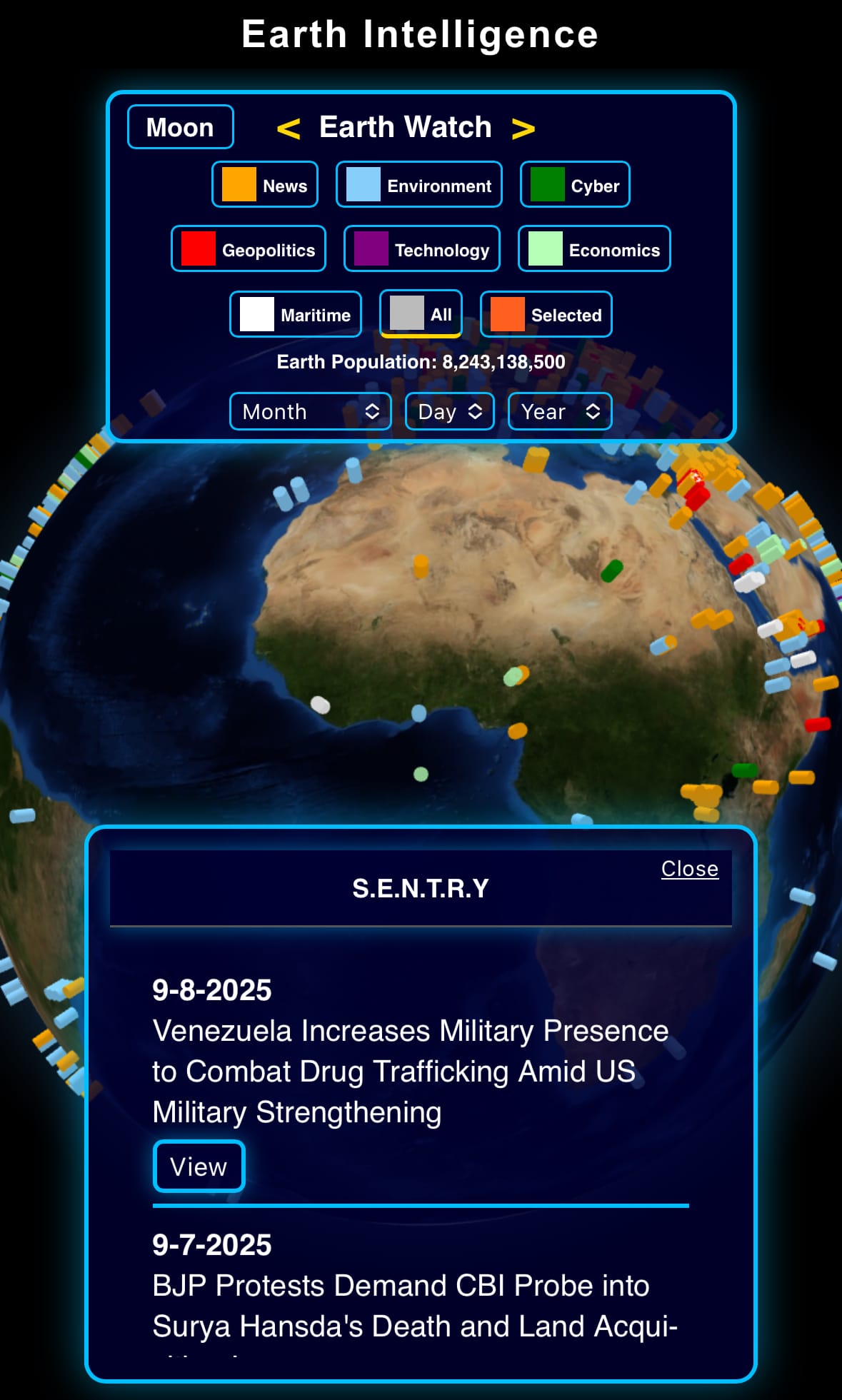


Support/Suggestions Email:
earthintelligence@earthintel.news




